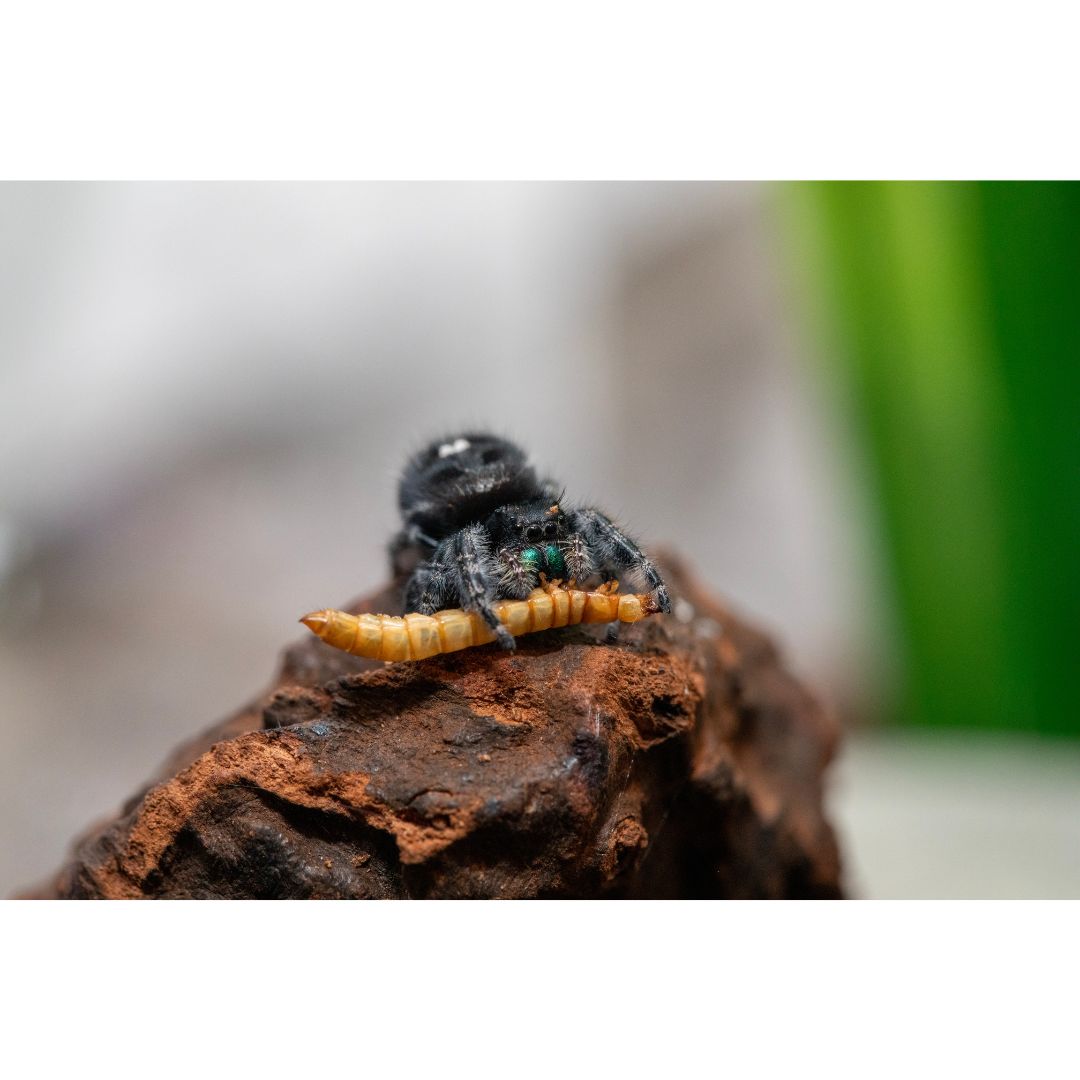What Do Jumping Spiders Eat? Two Favorites Revealed!
17th Apr 2025
?️ Jumping Spiders and Their Favorite Snacks: Dubia Roaches & Mealworms!
If you've ever spent time with a jumping spider, you already know they're some of the most curious, clever, and downright adorable little arachnids out there. With their big, expressive eyes and bold personalities, it’s no wonder they’ve become beloved pets among bug enthusiasts.
But have you ever wondered: what’s on the menu for these tiny hunters?
Let’s talk Dubia roaches, mealworms, and why jumping spiders love them so much!
? Dubia Roaches: The Gourmet Treat
Dubia roaches (Blaptica dubia) are a popular feeder insect for a variety of reptiles and invertebrates — and jumping spiders are no exception. Here's why they’re a hit:
-
Soft-bodied: Great for a spider’s small fangs.
-
High in protein: Fuel for growth and energy.
-
Slow-moving nymphs: Easy for young or shy spiders to catch.
-
Low odor & clean: A win for spider keepers!
Tip: Dubia roach nymphs (not adults!) are the ideal size. Adults are way too big and may even intimidate your spider.
? Mealworms: The Wiggly Classic
Mealworms (Tenebrio molitor larvae) are another favorite. These little wiggly snacks get your spider's attention fast.
-
Wriggly movement: Triggers the spider’s natural hunting instincts.
-
Easy to find: Available at most pet stores or online.
-
Can be gut-loaded: Feed mealworms nutritious foods to pass those nutrients on to your spider.
Pro tip: Cut the mealworm into smaller sections for tiny or juvenile jumpers — they’ll still love the taste without the struggle.
? How to Feed
Feeding your jumping spider can be just as entertaining as watching them dance! Here's how to offer Dubias or mealworms:
-
Use feeding tongs or a toothpick to gently wiggle the insect near the spider.
-
Watch the adorable pounce — it’s like a mini nature documentary in your own home.
-
Remove any leftovers after a few hours to keep the enclosure clean.
❗A Note on Safety
Only offer appropriately sized prey! A good rule of thumb: the insect should be no larger than the spider’s abdomen. If in doubt, cut it up.
Also, avoid wild-caught insects — they may carry parasites or pesticides.
? Final Thoughts
Feeding time is one of the best ways to bond with and observe your jumping spider’s natural behavior. Whether it’s a Dubia roach or a juicy mealworm, you’ll get to see their precision hunting skills and quirky personalities shine.
Plus, let’s be honest — watching a spider happily munch is just plain cute. ??️




